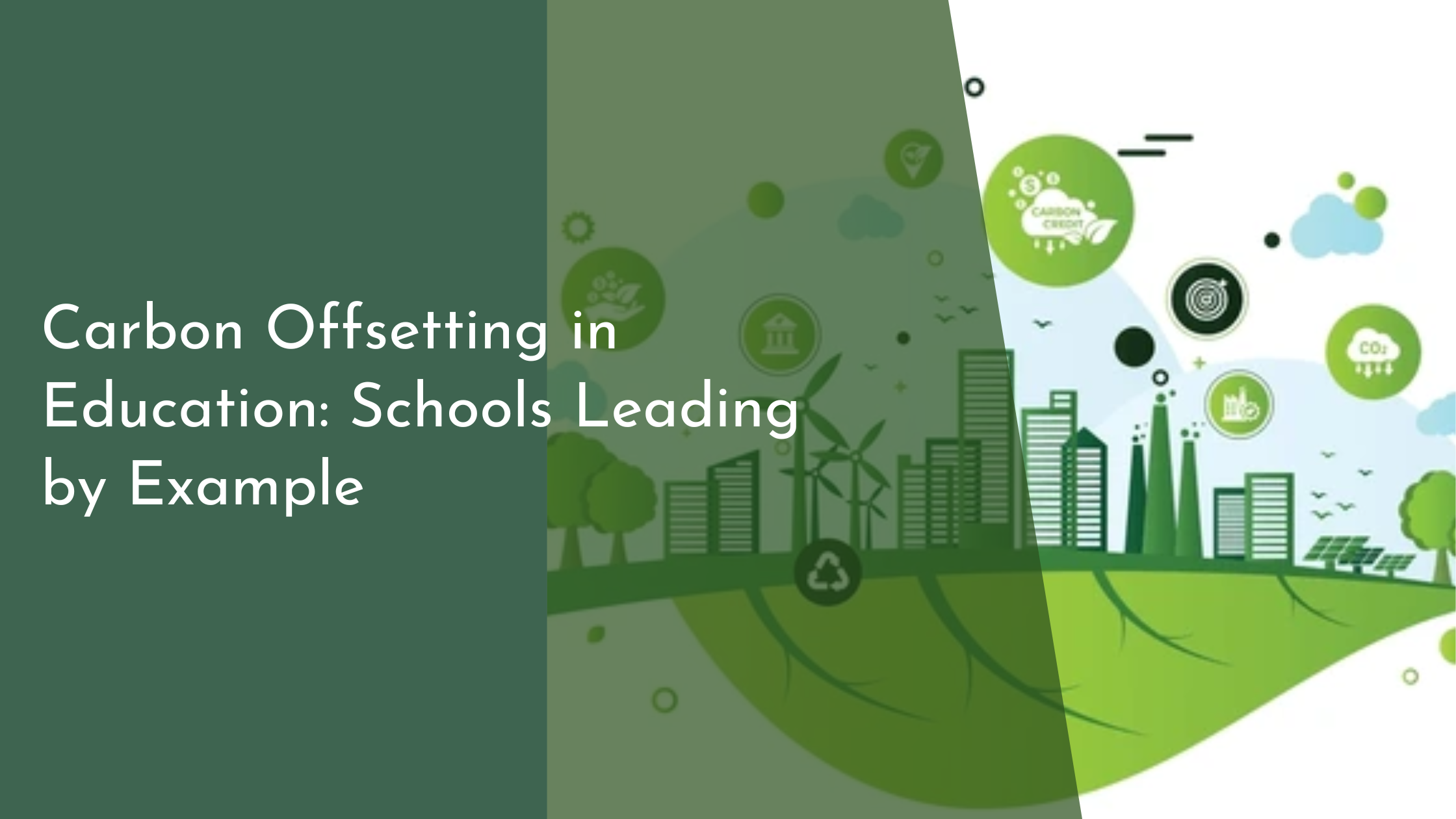Carbon Offsetting in Education: Schools Leading by Example
As concerns about climate change continue to grow, educational institutions are stepping up to play a pivotal role in fostering environmental sustainability. Carbon offsetting has emerged as a significant strategy in this endeavor, allowing schools to mitigate their carbon footprints while educating students about the importance of preserving our planet. By leading by example, schools are not just teaching students about sustainability; they are actively engaging in practices that contribute to a healthier, greener world. This article explores how schools are embracing carbon offsetting and the benefits it brings to the educational community.
Understanding Carbon Offsetting in Education
Carbon offsetting in education involves investing in projects that reduce or absorb carbon emissions to compensate for the carbon footprint generated by school operations. This can include energy consumption, transportation, and other activities that contribute to greenhouse gas emissions. By purchasing carbon credits, schools can support initiatives such as reforestation, renewable energy projects, and energy efficiency improvements, effectively neutralizing their impact on the environment. This approach not only helps schools manage their environmental responsibilities but also serves as an educational tool to teach students about the complexities of climate change and the importance of taking action.
Incorporating carbon offsetting into the educational framework requires a comprehensive understanding of a school’s carbon footprint. This involves conducting audits to measure emissions and identify areas where reductions can be made. By involving students in these audits, schools can provide practical learning experiences that tie into subjects like science, mathematics, and social studies. Students gain insights into data collection and analysis, fostering skills that are crucial for problem-solving and critical thinking. By understanding their institution’s environmental impact, students can contribute ideas and initiatives that further enhance the school’s sustainability efforts.
Innovative School Initiatives for Carbon Neutrality
Many schools are pioneering creative initiatives to achieve carbon neutrality. For example, some schools have integrated renewable energy sources, such as solar panels and wind turbines, into their infrastructure. This not only reduces reliance on fossil fuels but also serves as a hands-on learning tool for students, who can monitor energy production and consumption in real-time. Other schools are focusing on sustainable transportation solutions, like promoting cycling, walking programs, and carpooling to reduce emissions from commuting.
Schools are also engaging in partnerships with local organizations to participate in reforestation projects or community clean-up events. These collaborations foster a sense of community and shared responsibility for environmental stewardship. Additionally, some institutions have developed sustainability-focused curricula, incorporating lessons on carbon offsetting and climate change into various subjects. By doing so, they inspire students to think critically about their role in environmental conservation and empower them with the knowledge and skills to drive future initiatives.
Benefits of Carbon Offsetting for Students and Staff
Implementing carbon offsetting initiatives brings numerous benefits to both students and staff. For students, these programs offer an invaluable educational experience, providing them with real-world applications of the theoretical knowledge they acquire in the classroom. By engaging with sustainability projects, students develop a deeper understanding of environmental issues and are encouraged to become proactive in their communities. This experiential learning approach fosters a sense of empowerment and responsibility, enabling students to envision themselves as agents of change.
For staff, participating in carbon offsetting projects can enhance job satisfaction and professional development. Teachers and administrators gain opportunities for cross-disciplinary collaboration, as sustainability initiatives often require input from various academic fields. In addition, engaging with environmental projects can foster a positive school culture, promoting teamwork, innovation, and a shared commitment to sustainability. By being part of a school that prioritizes environmental responsibility, staff members can take pride in their institution’s contributions to a sustainable future.
How to Get Involved: Schools as Sustainability Leaders
Schools looking to become sustainability leaders can start by forming dedicated environmental committees comprising students, teachers, and administrative staff. These committees can spearhead efforts to assess the school’s carbon footprint, set reduction targets, and identify suitable carbon offset projects. By involving the entire school community in these activities, schools ensure that sustainability becomes an integral part of their culture and values.
Another effective way to get involved is by creating partnerships with local businesses, non-profits, and government agencies. These collaborations can provide schools with the resources and expertise needed to implement effective carbon offsetting strategies. Schools can also host workshops, seminars, and events focused on sustainability, inviting guest speakers and experts to share their knowledge. By creating platforms for dialogue and learning, schools can inspire broader community engagement and establish themselves as leaders in the fight against climate change.
Incorporating carbon offsetting into educational practices is a powerful way for schools to contribute to environmental sustainability while providing valuable learning experiences for students. By embracing innovative initiatives and fostering a culture of sustainability, schools are equipping the next generation with the knowledge and skills necessary to tackle the pressing environmental challenges of our time. As schools continue to lead by example, they demonstrate that educational institutions can be catalysts for change, inspiring communities to work together towards a more sustainable future. So, let’s applaud and support schools in their journey to carbon neutrality, as they pave the way for a greener planet for all.

